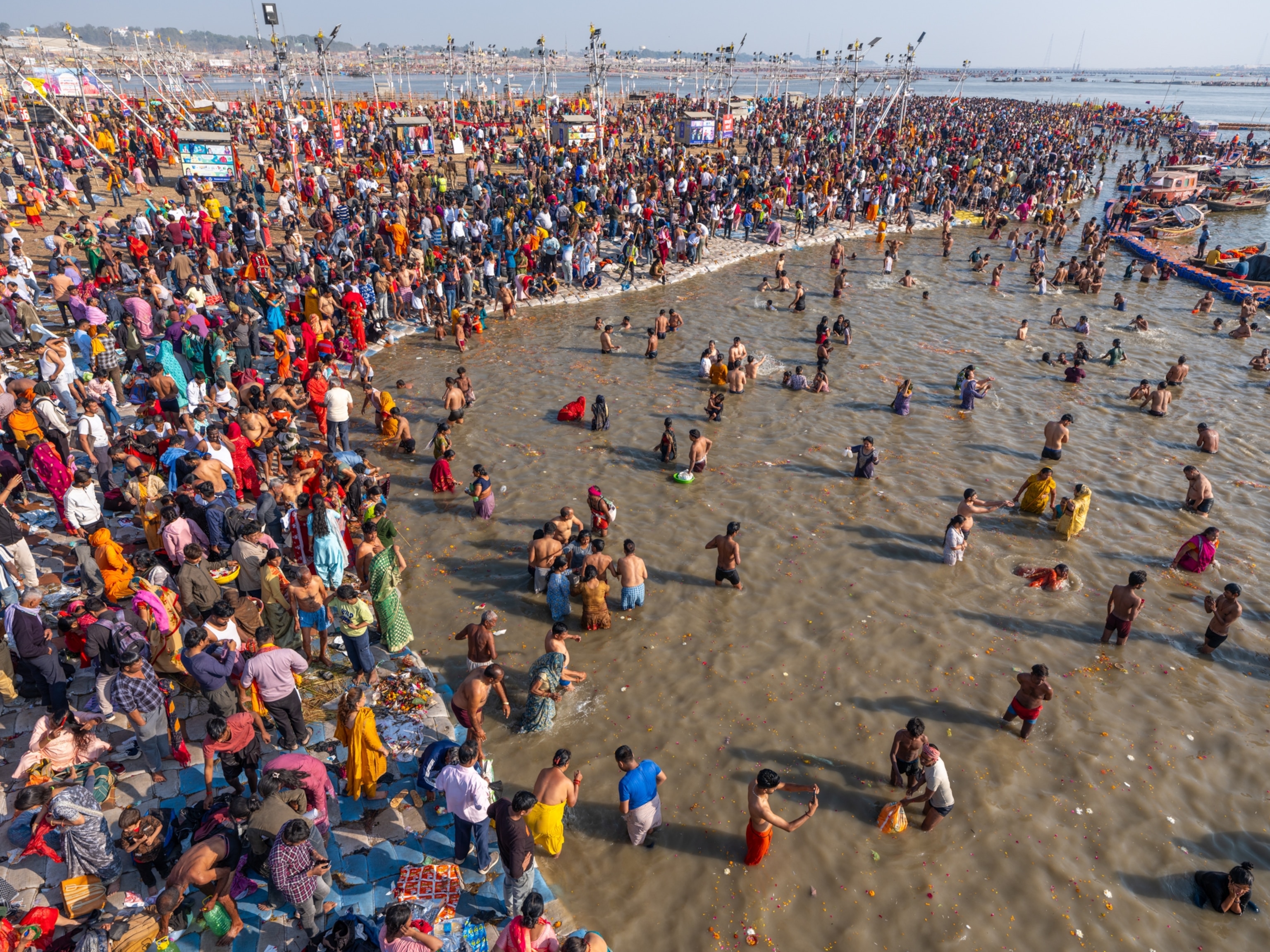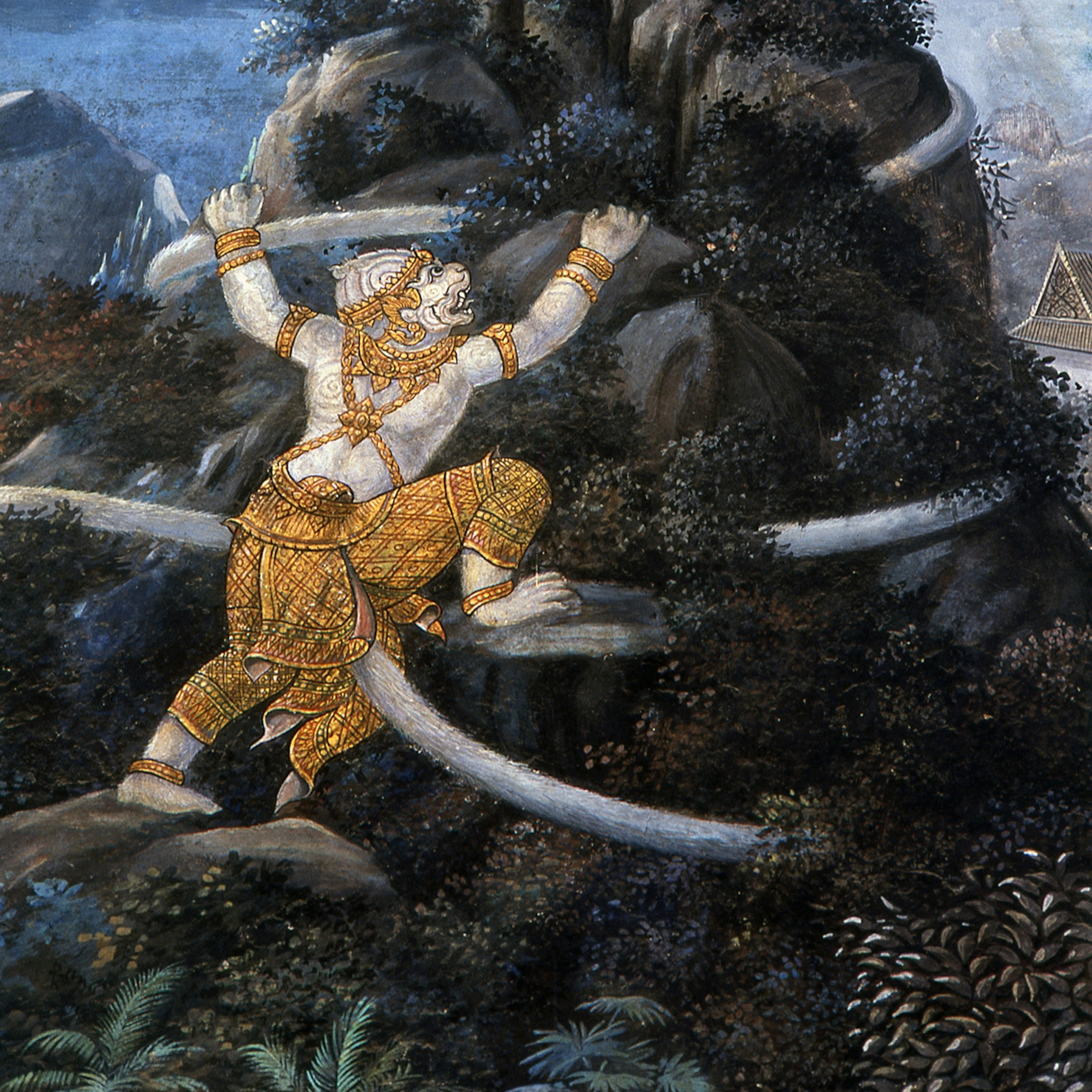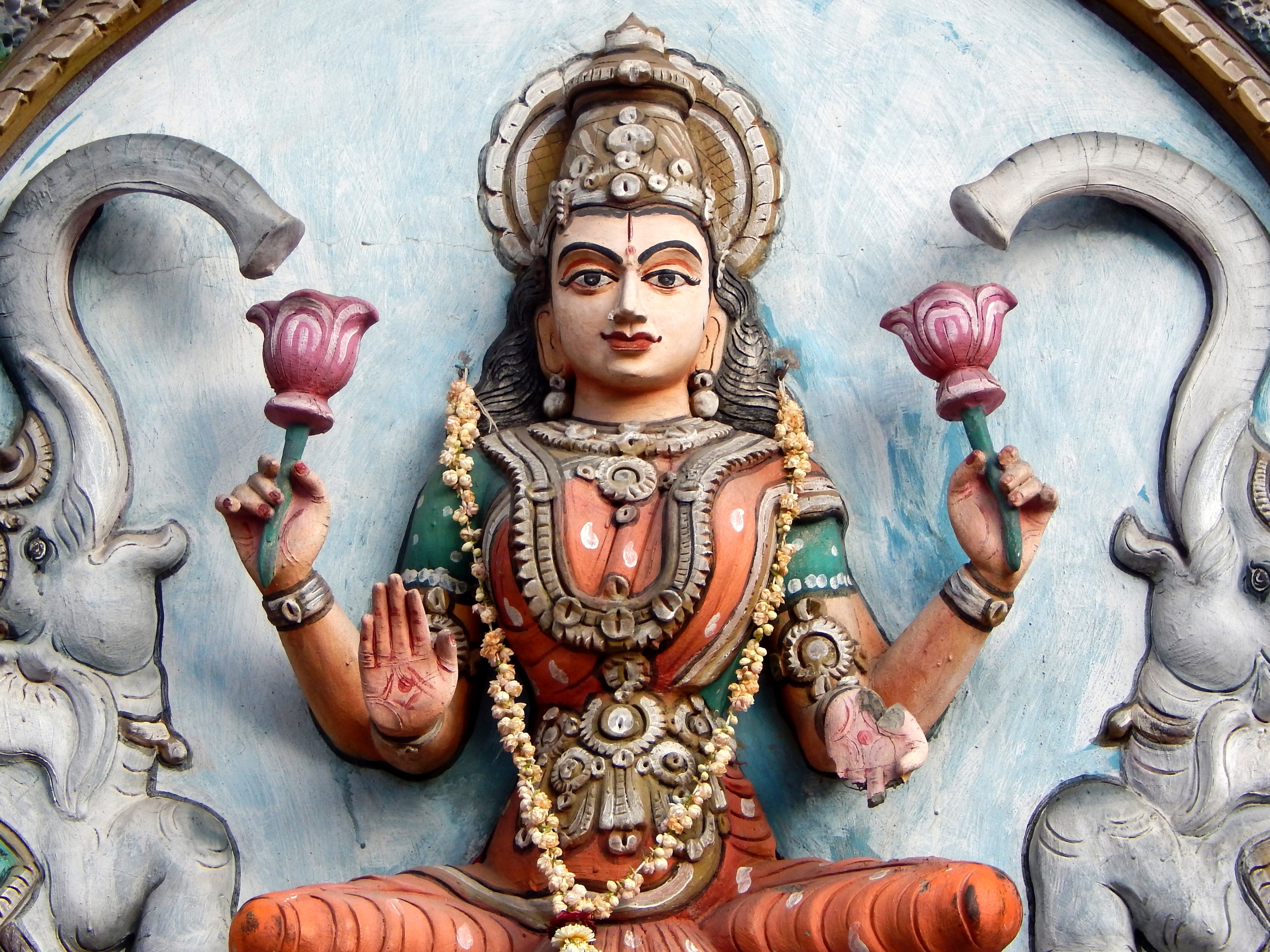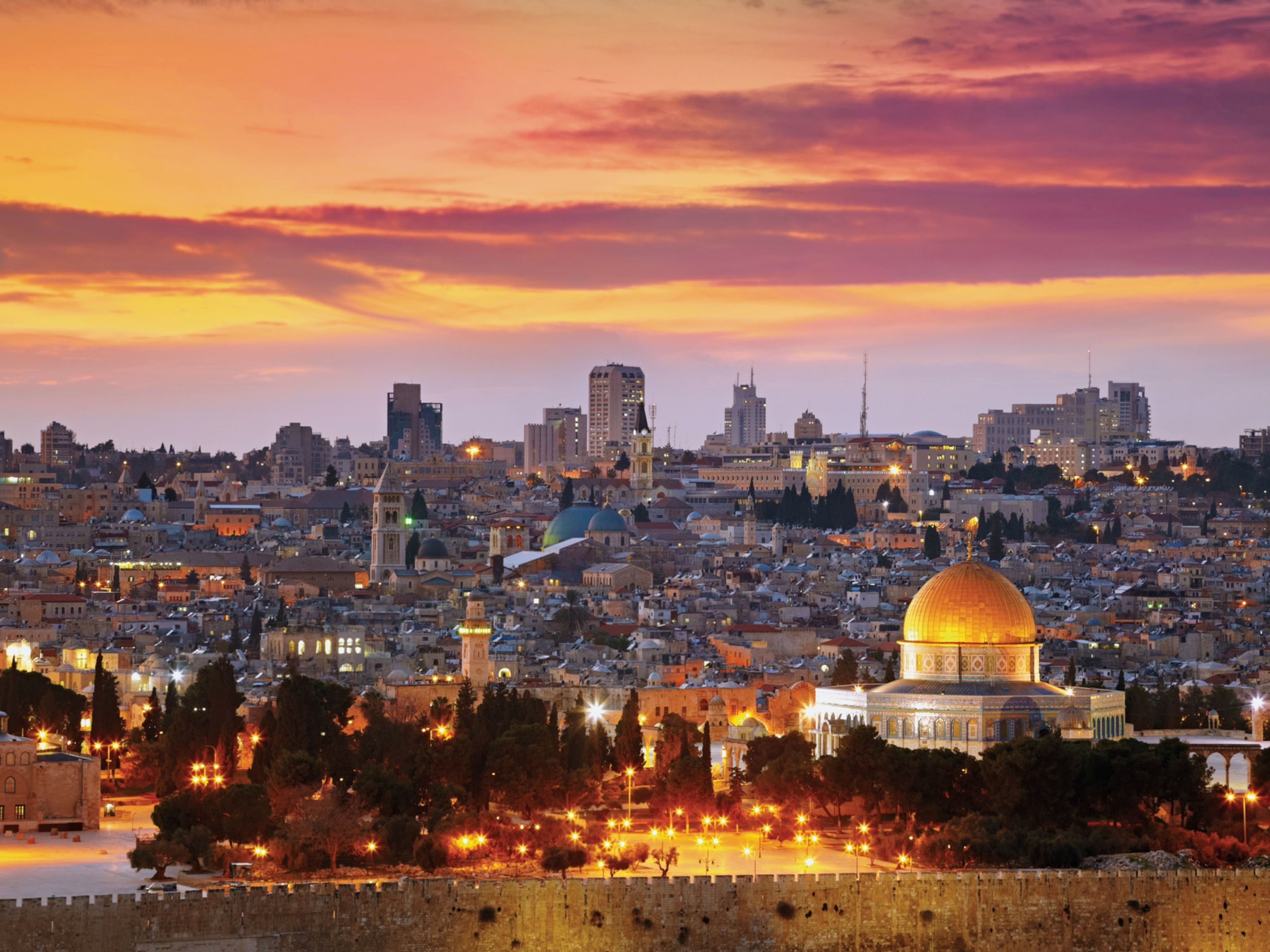Every 12 years, India builds this megacity—then tears it down
The Kumbh Mela is the world's largest religious gathering, attracting hundreds of millions of Hindu worshippers. Here's how India prepared—and what happens once it's all over.
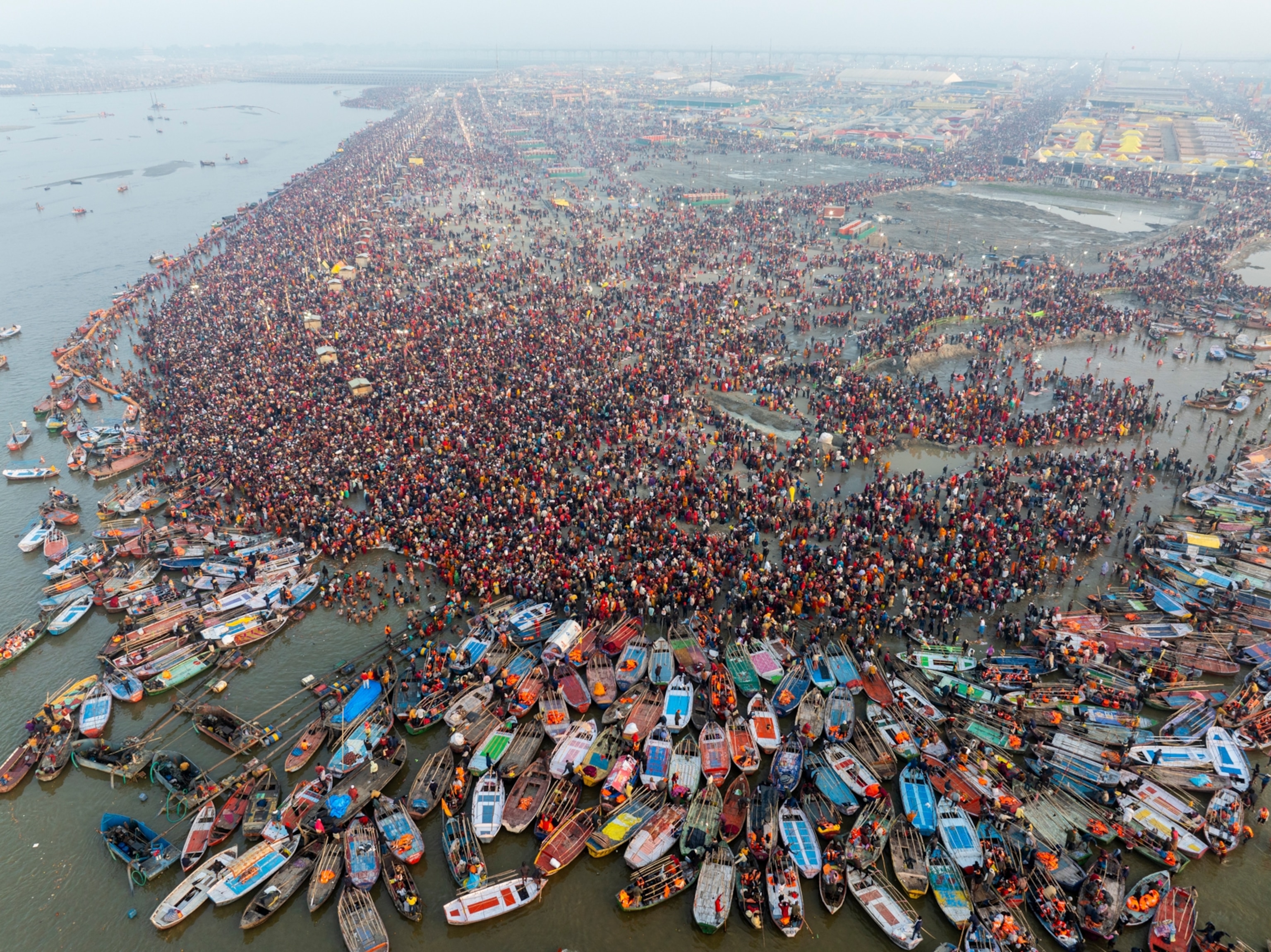
The Ganges River in India is awash with brilliant color as millions of Hindu pilgrims dressed in tangerine, fuchsia, and watermelon wade into the green waters, dropping marigolds in their wake as a sign of devotion. At dusk, chiming, mesmerizing music floats out over the crowds, and each day at dawn, the chanting begins anew. Across the labyrinthian tent city, the sound of chanting and the scent of ritual fires fill the air in equal measure. This is the Kumbh Mela the largest religious gathering on Earth.
Around 400 million pilgrims are expected to attend this year’s pilgrimage, bathing in the rivers and washing away their sins. Though they are seeking absolution, this is not a somber affair. The Kumbh Mela is a massive, joyful celebration, an astonishing convergence of human life. It’s also an inherently precarious feat of engineering and ingenuity, one that Indian officials have only a few short months to prepare for as hundreds of millions of people that will come to the festival over its course of 45 days, between January 13 to February 26.
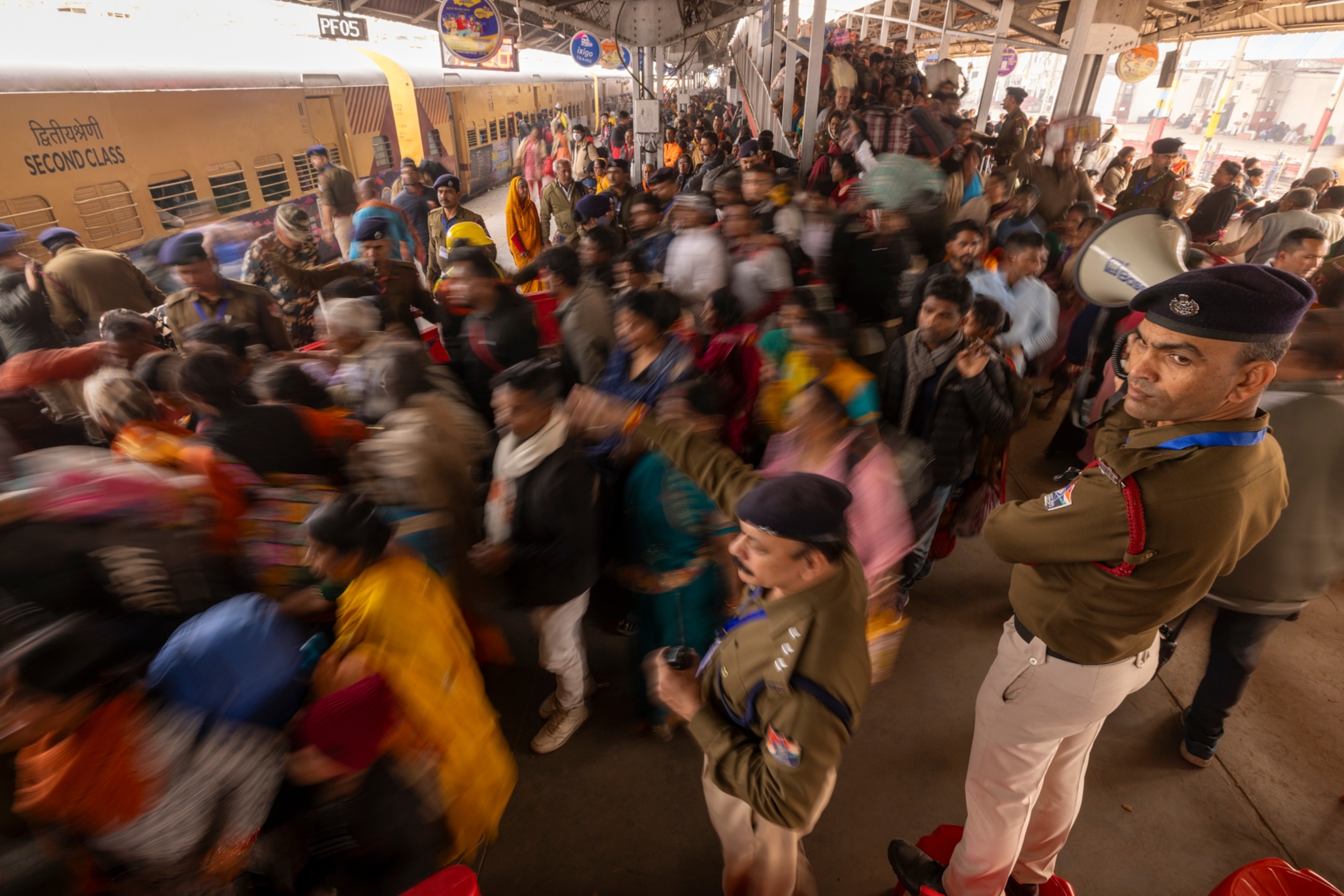

The festival happens every twelve years and takes place in the northern Indian city of Prayagraj, at a site made sacred by the convergence of two major rivers: the Ganges and the Yamuna. During much of the year, this piece of land is inaccessible, submerged by the floods of monsoon season, which lasts from June to September. But as the season recedes, so too do the waters, revealing a nearly 10,000-acre empty floodplain. This year’s pilgrimage is particularly significant, bringing a historic number of worshippers to the Ganges.
“It is a matter of astrological conjunction,” says Diana L. Eck, co-author of The Kumbh Mela: Mapping the Ephemeral Mega City and professor emerita at the Harvard Divinity School. Jupiter, the sun, and the moon have entered a period of alignment that Hindus believe brings vitality to the river water. “The river is the deity in this case. It is the temple,” says Eck. According to Vedic scripture, the central text of Hinduism, there is a third, mystical body of water that joins with the Ganges and the Yamuna at this location, the heavenly Sarasvati River, which exists in metaphysical form, granting further holiness to the flowing waters. Hence, this year’s Kumbh Mela is called the Maha Kumbh Mela, indicating its unusual importance (“maha” translates roughly to great).

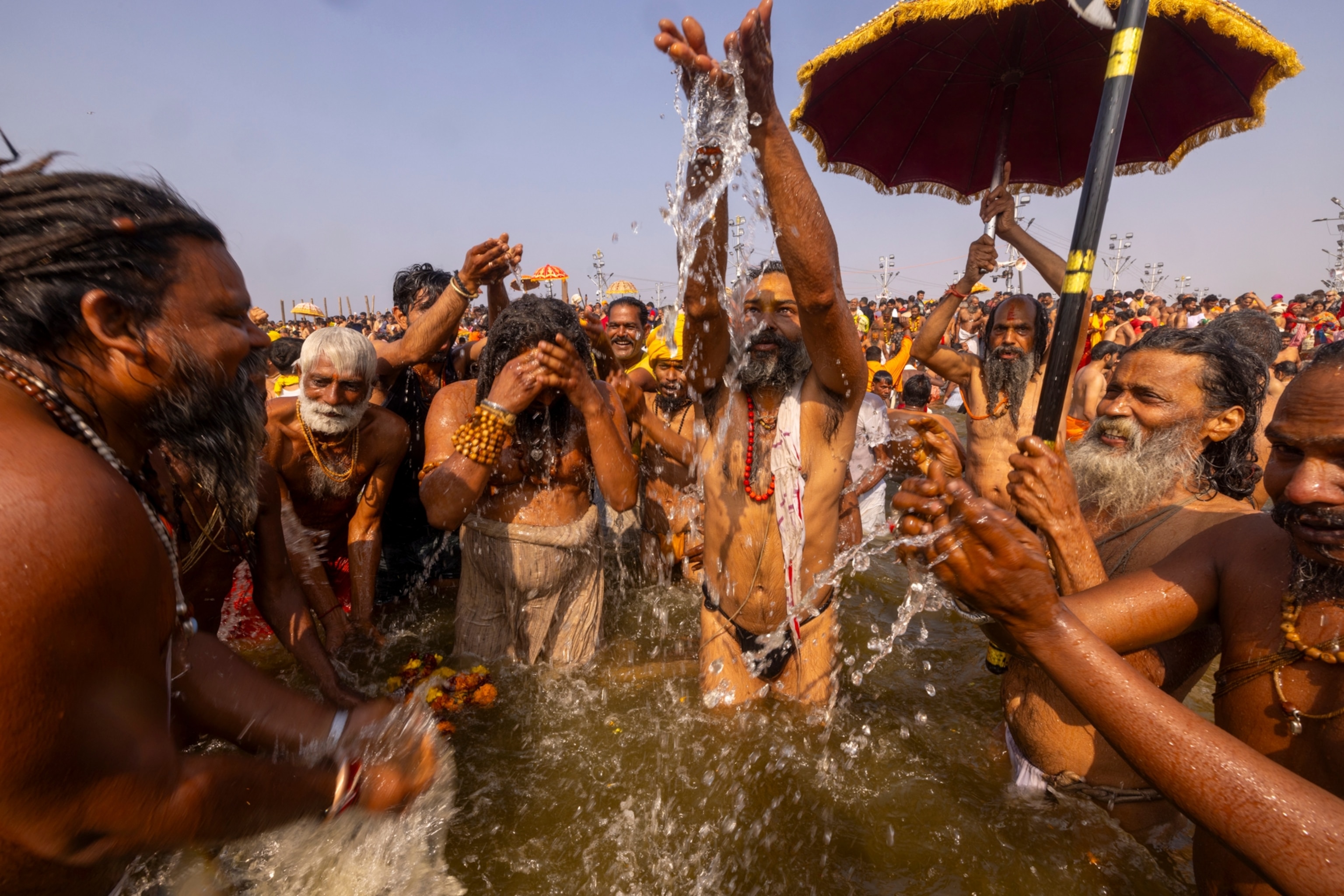
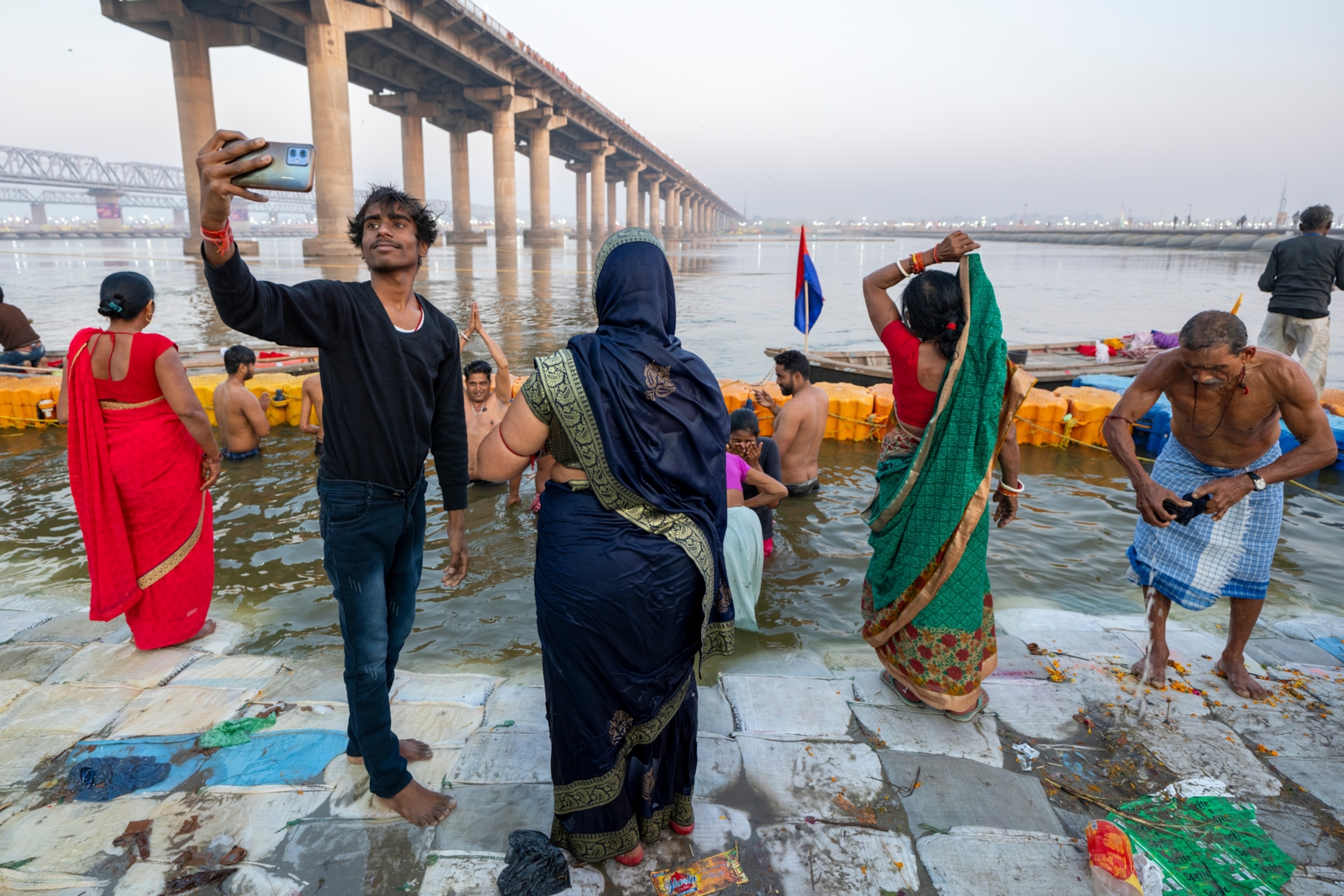
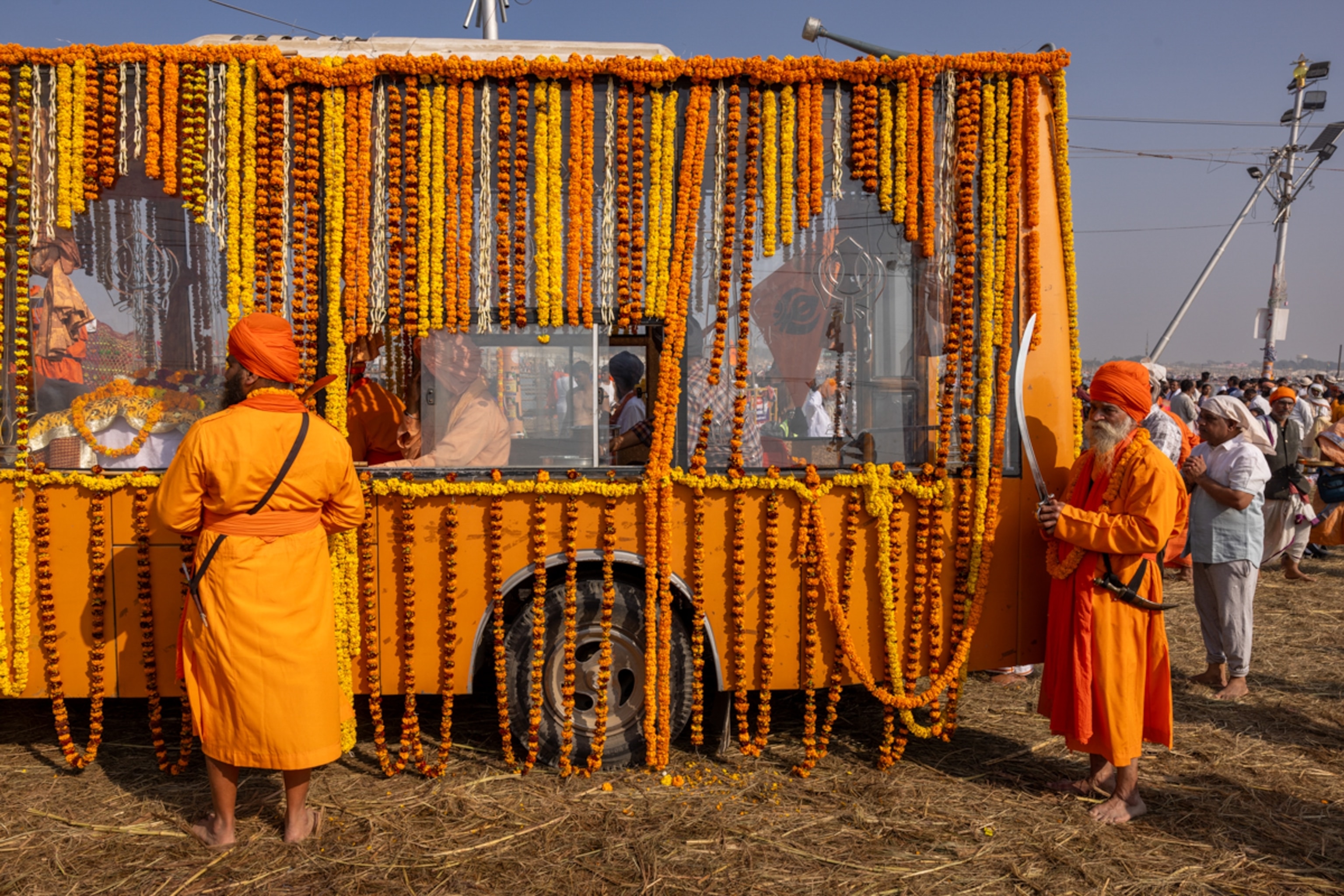
In early January, pilgrims arrived at the newly transformed site, about the size of 7,500 football fields, in Prayagraj. Some will stay for a few days while others braved the full six weeks. To host the millions of attendees, the Indian government has constructed an “Ephemeral Mega City,” in the words of Rahul Mehrotra, co-author of the Harvard study with Eck.
“This is not a pop-up city,” he clarifies. “It is a very deliberate, formal state enterprise and that is what makes it absolutely unique.” The temporary settlement is arranged on a grid, and its layout is pronounced enough to be seen from space. “The government builds miles and miles of roads and bridges,” Eck adds. “They are fairly wide avenues, as well.”
The thousands of buildings used to house visitors and services must be constructed in the two months following the floods and before the event. The red, white, and yellow city is made primarily from canvas fabric, bamboo poles, and twine, though the occasional structure is built using corrugated tin. Sleeping quarters range in style and amenities depending on how much a pilgrim can afford. Poorer pilgrims stay in shared spaces like sleeping mats in state-built community tents, which have shared bathrooms and eating areas. Then there are private tents with air conditioning, attached bathrooms, Wi-Fi, and chef-cooked meals.
For the most affluent, The Dome City is a new addition to this year’s Kumbh Mela. A collaboration between India’s tourism department and private design-build firms, the area features 44 bubble-like structures made from clear polycarbonate sheets, which are advertised as being both bulletproof and fireproof.
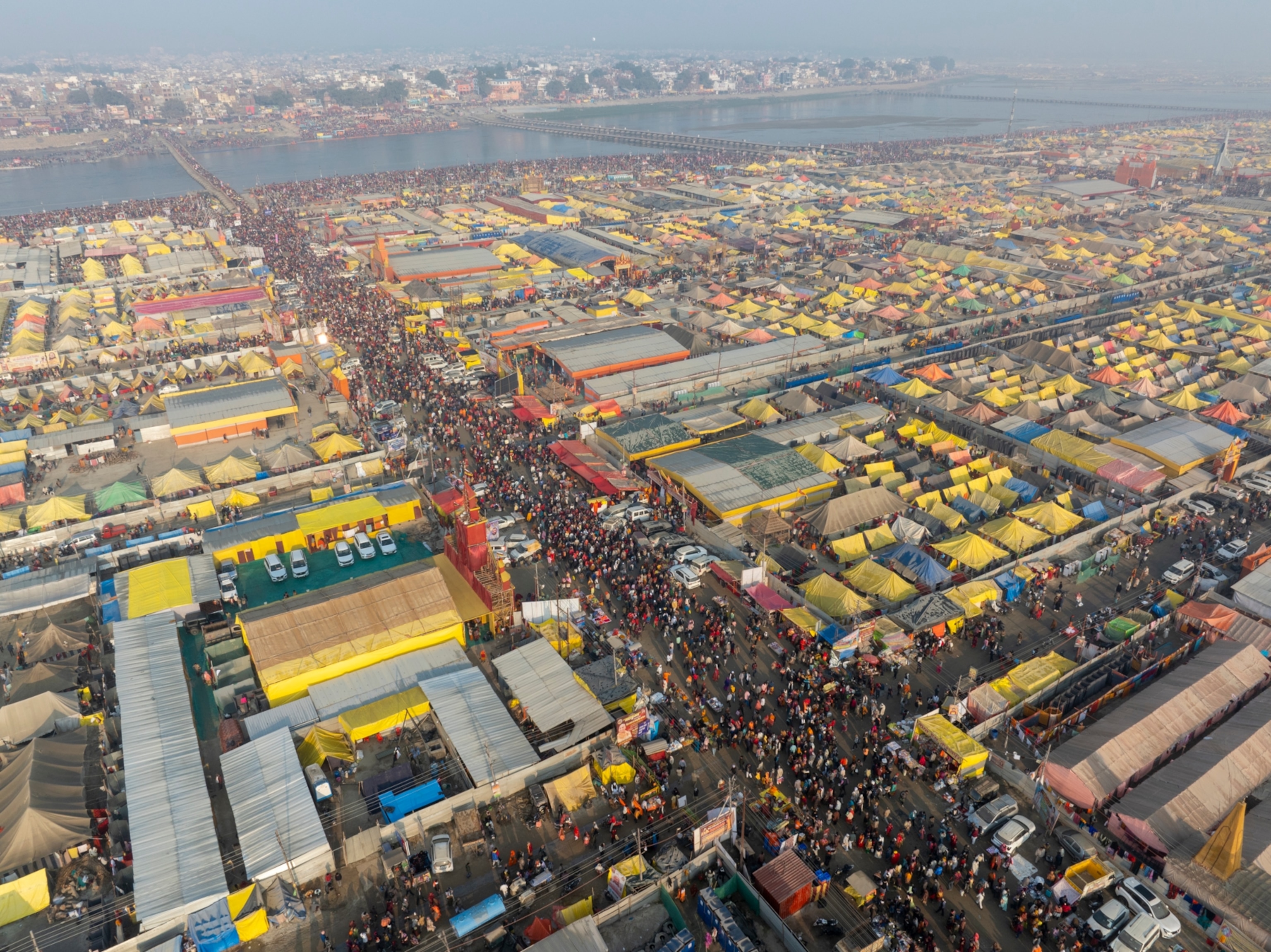
“It is the largest and cleanest Indian city I have ever lived in,” Mehrotra says. He cites two reasons. First, the government has hired 10,000 sweepers to “continually cleanse the city” and second, there isn’t very much trash to begin with. “People who come to the city carry with them frugal means for their existence for a few days,” he points out. “Therefore, litter is minimized or at least organized and disposed of, say in the case of the community kitchen.”
The government has introduced campaigns to encourage pilgrims to drop just one or two flowers into the water instead of the more traditional garland. The result is still a colorful display of devotion, but more manageable for those charged with cleaning the river at the center of this ephemeral city. “Every day, you see people scooping up the flowers and offerings from the river, so that you don’t have many feet of sodden offerings along the riverbank,” Eck says.
It seems an impossible task, given the large number of people who come to the Kumbh Mela, but Eck explains that there are certain standards maintained by the government, including the building of over 30,000 toilets, reinforcing sanitation along the riverbanks where pilgrims gather. Managing sanitation also manages disease, an important public health concern when so many people congregate.
Though Mehrotra notes that there haven’t been any “major public health challenges” for the last three to four cycles of the festival, crowd management remains a concern—continually evolving to protect and accommodate the hundreds of millions of pilgrims.

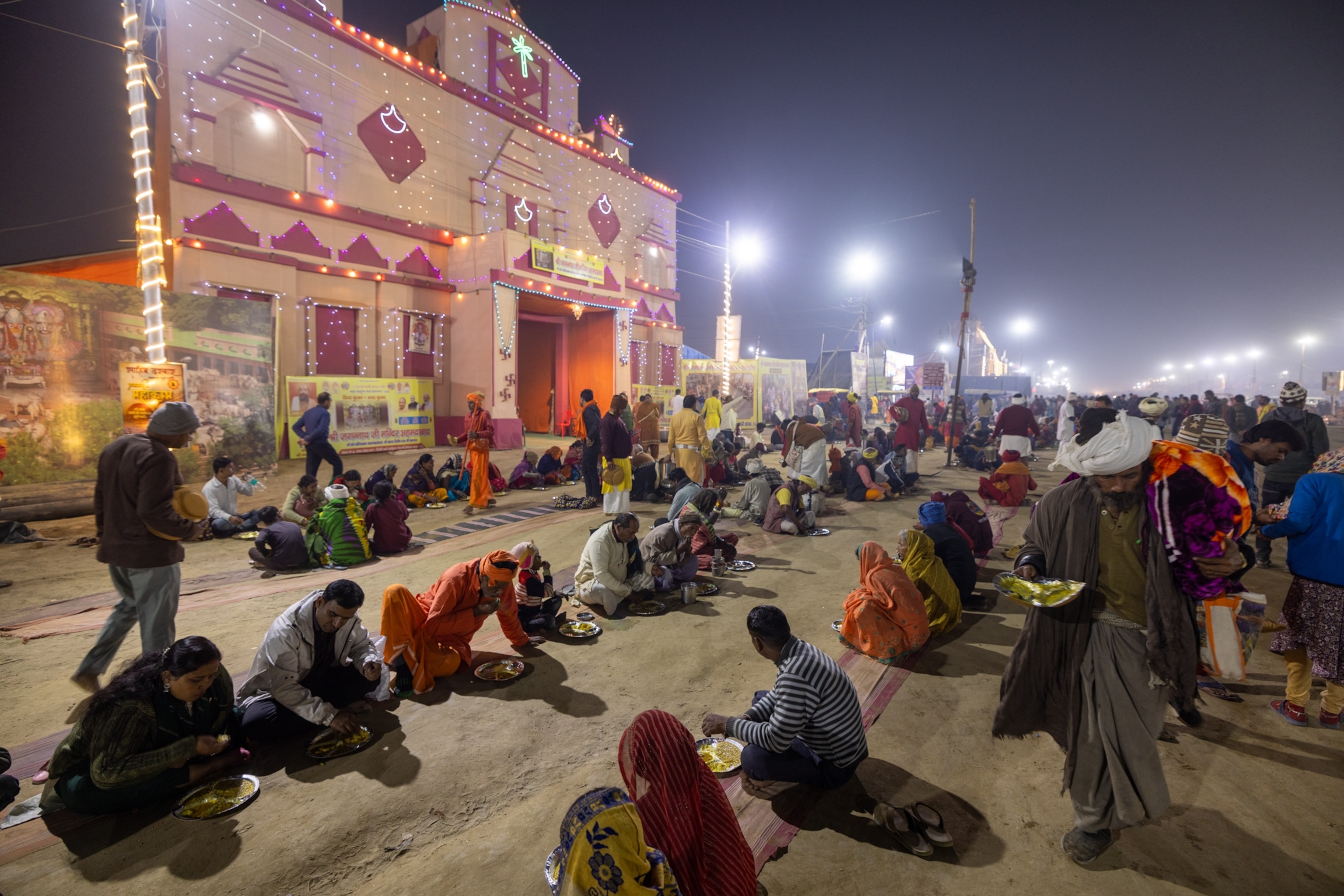
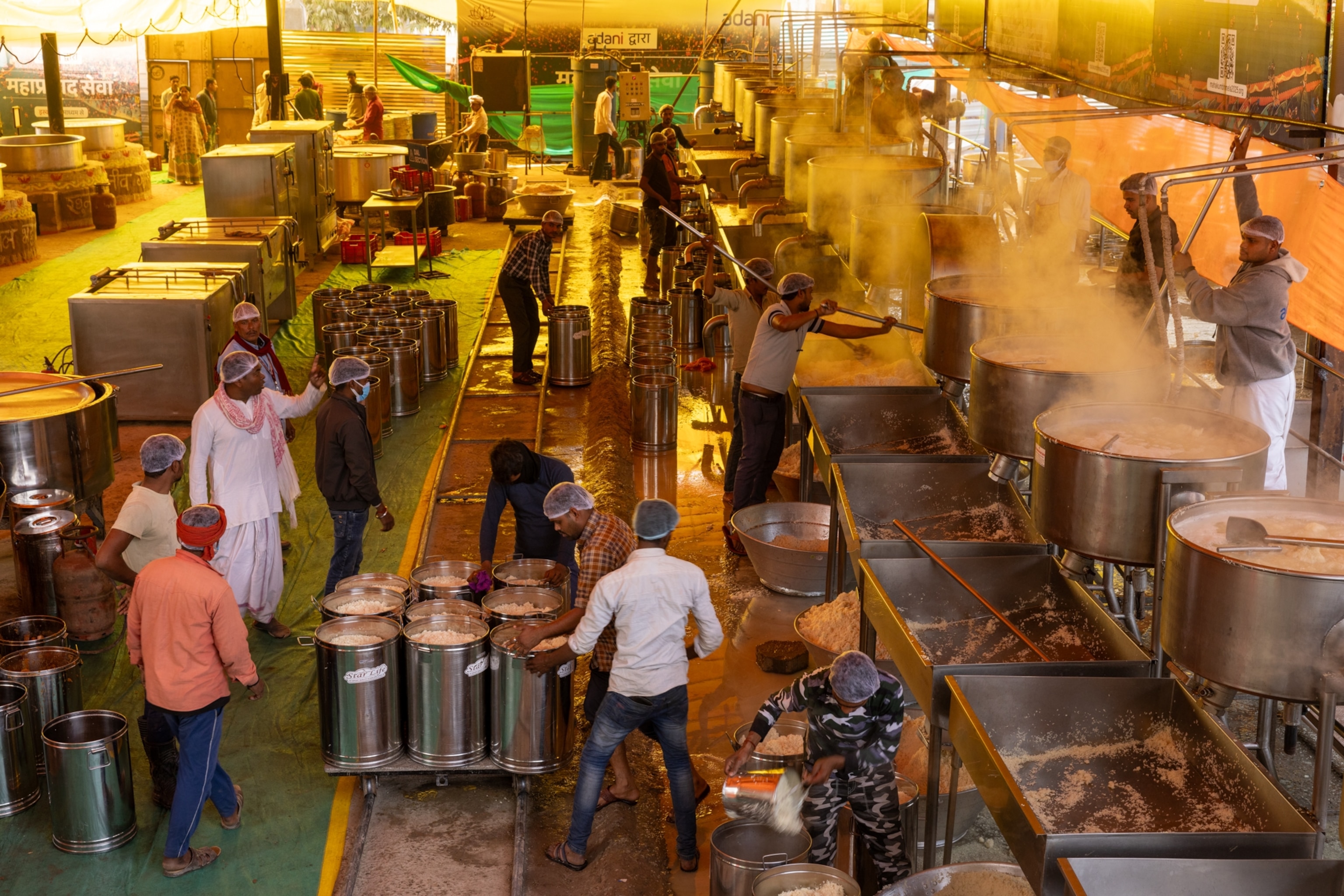

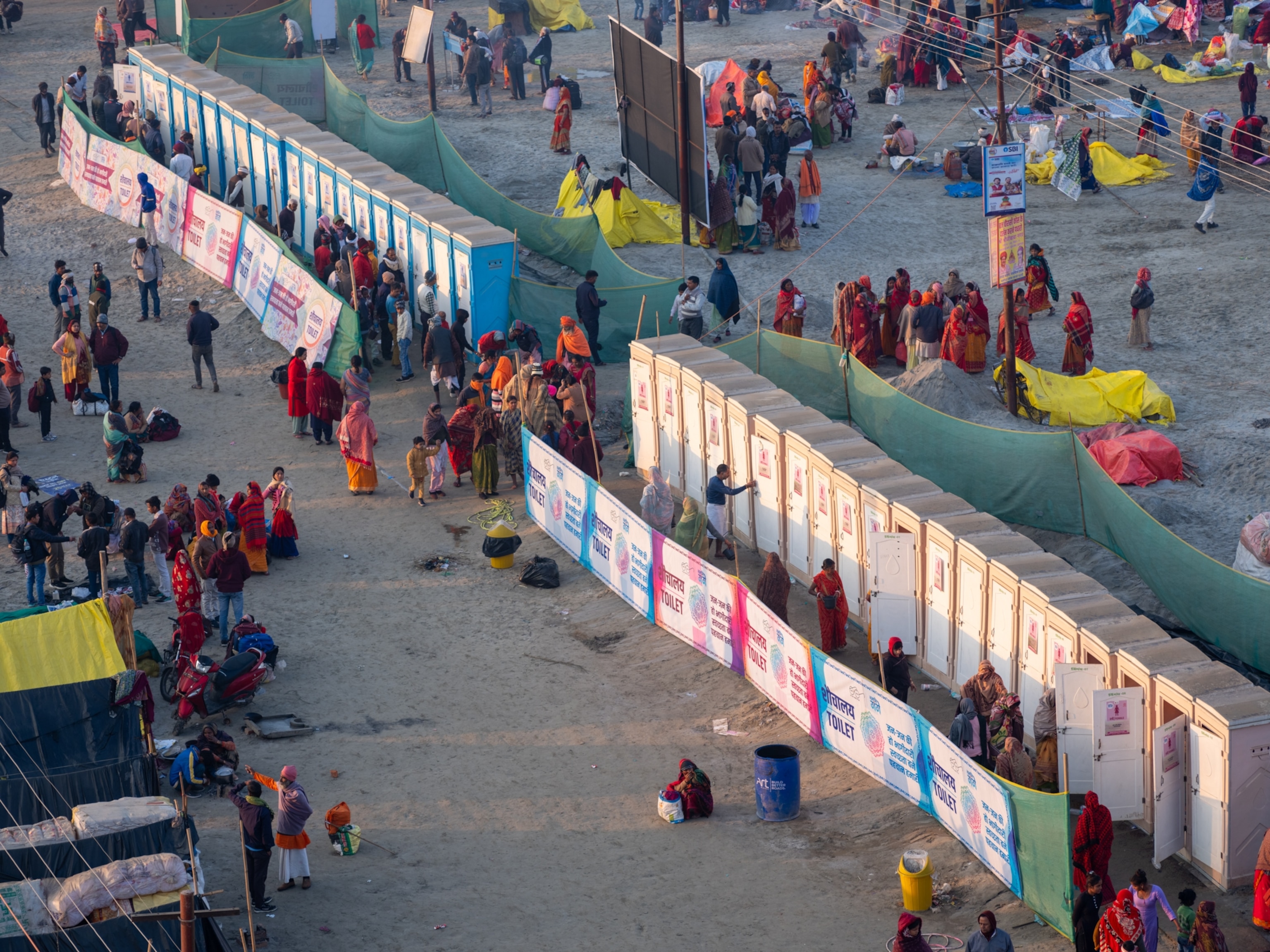
Stampedes and crowd crushes are the largest threat to public safety at any large gathering, particularly one of the Kumbh Mela’s size. Undoubtedly, the 1954 stamped, when an estimated 800 pilgrims died, either drowned or trampled looms large in planners’ minds. A similar occurrence in 2013 had a death toll of 42. Since then, the number of pilgrims at the Kumbh Mela has grown rapidly; compared to this year’s seminal pilgrimage, 1954’s had roughly 5 million pilgrims.
To manage the throngs of pilgrims, the Indian government trains and hires upwards of 40,000 police officers (including a specialized group of 1,300 female officers instructed to guard women devotees). And like the number of visitors, this number rises with each Kumbh Mela. To help them track foot traffic, some AI-powered 2,7000 cameras have been installed throughout Prayagraj to identify and analyze congested areas.
Despite these preparations, and the close study of stampedes at earlier festivals, tragedy struck this year on January 29, one of the most important days of the festival, when a crowd crush at the riverbank left 30 dead and 90 injured. More than 76 million pilgrims had gathered at the river that day. Rahul Gandhi, India’s opposition leader, criticized the crowd control, arguing that too much emphasis had been placed on the experience of wealthy pilgrims. “Mismanagement and the administration's special focus on VIP movement instead of common devotees are responsible for this tragic incident," he said in a statement.
Still, risks like stampedes haven’t deterred the devout who continued to wade into the confluence of rivers, seeking absolution and salvation from the cycle of birth and death.
After the pilgrims return home and the Maha Kumbh Mela is over in late February, the riverside land will go back to its original agricultural use, but first, the local and state governments will begin the long process of cleaning up the site. “It takes a good month to clear up visible refuse,” explains Eck. “And when the flood waters of the river come again in the fall, it carries it all away.”
